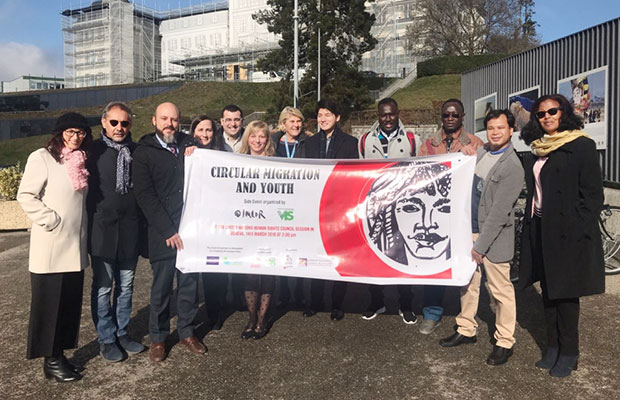
A Salesian Approach to Stemming Youth Migration
According to official estimates, global youth migration is on the rise. And while it’s challenging to pinpoint exact numbers, one thing is certain—thousands of marginalized young people leave their countries in search of work and better opportunities abroad every single day. Around the world, our Salesian missionaries are devising creative ways to address this challenging issue.
“These youth feel as though they have nothing to lose,” explains Father Tim Ploch, interim director of Salesian Missions. “But often they have little understanding of what they are about to face—treacherous journeys with no guarantee of safe arrival; unfamiliar communities and language barriers with no social capital to draw upon; calculating opportunists intent on exploiting their vulnerabilities; or worse. Far too often, migrant youth plunge through society’s cracks and end up more marginalized than when they started—this time, without any family around to lean on.”
“Further,” he continues, “youth migration deprives home countries of the hope and promise they need to turn their own collective futures around. We must find ways to cultivate the potential of young people right where they are, so they may lead their families, their communities, and their countries toward brighter and more sustainable futures.”
Of course, this is sometimes easier said than done. Lack of meaningful employment at home is one of the leading drivers of youth migration, but permanently solving this issue requires a large-scale, multi-tiered effort and investment in education; workforce training; entrepreneurship; and wraparound support. These things don’t happen overnight, and a variety of external forces and competing priorities can easily derail progress. That’s why, as they simultaneously work to improve local access to basic education, technical training, and job opportunities for youth, our Salesian missionaries have identified a promising and complementary strategy best described as “circular migration.”
In this scenario, missionaries train migrant youth to bring specialized, relevant skills back to their original home communities. Returnees then teach those skills to other young people, so that fewer are tempted to leave.
In Tambacounda, Senegal for example, a returned migrant named Seny leads a small agricultural training program where youth can learn the skills they need to start and sustain their own small farms. Through fostering entrepreneurship and the development of micro-businesses, the project also aims to create concrete employment opportunities that support the local economy.
“Seny originally left Senegal for Italy in search of something better,” says Fr. Tim. “Fortunately, our missionaries in Lampedusa, Italy had a vision. After meeting Seny and connecting with their colleagues in Senegal, this concept of circular migration was born.”
In Ghana, Ofuri and Badu had slightly different experiences than Seny’s—but both experienced the same positive result. Ofuri first migrated nearly ten years ago, enduring kidnapping, ransom demands, and poor health before making his way back home. Badu never left, but the idea loomed large: “The main cause of migration for us young people in Ghana is the lack of employment,” he says. “I thought I would migrate too. We do it because we are looking for a better life.”
At four centers across Ghana, Salesian missionaries serve poor youth at risk of child labor, human trafficking, and migration. Ofuri and Badu were able to enroll in eco-sustainable agricultural training programs in Accra and now look forward to working in their home country.
“Once we learn a profession that allows us to live with dignity, the desire to leave disappears,” explains Badu. “Earning money here is the best way to prevent migration.”
Another important benefit of projects like these? They help relieve some of the burdens borne by host countries around the world, many of which lack the capacity and resources to fully integrate newcomers into society.
Our mission tackles the root causes of poverty and despair, so youth can thrive right where they are. What’s your mission?

